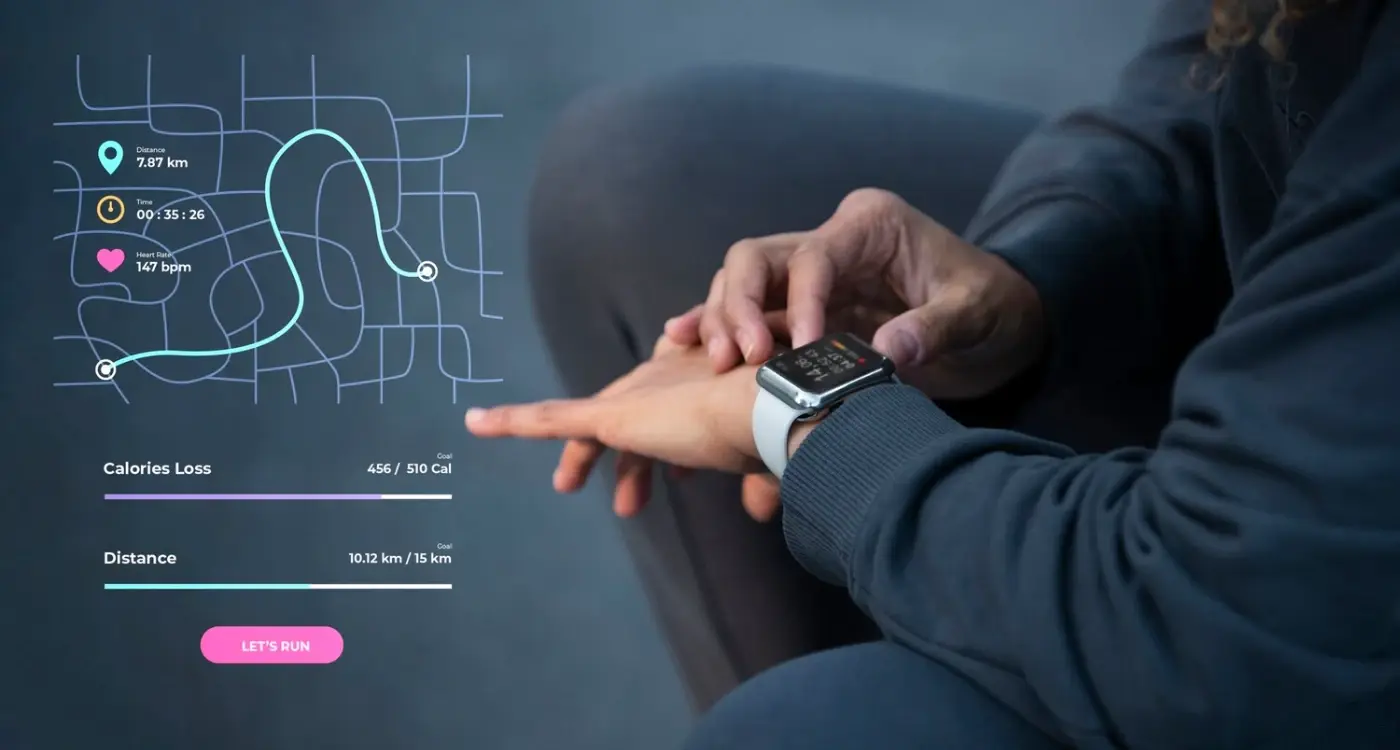How Do You Know If You Have A Good Idea For An App?
Coming up with an app idea can feel like standing at the beginning of an exciting yet daunting journey. Whether you're a budding entrepreneur, a small business owner, or simply someone with a creative spark, that brilliant app concept keeping you awake at night might just be the next big thing. But how can you be sure?
The difference between a good app idea and a successful app lies not in the flash of inspiration, but in the careful validation that follows
Over our eight years of helping innovators bring their app ideas to life, we've learned that successful apps aren't born from hunches alone. They're crafted through a thoughtful process of validation, research, and refinement. Think of it like planning a round-the-world trip - you wouldn't just pack your bags and hope for the best, would you?
Why Validation Matters
The app marketplace is rather like the British weather - constantly changing and sometimes unpredictable. With millions of apps available across various platforms, your idea needs more than just uniqueness to succeed. It needs proper validation to ensure it's solving real problems for real people.
In this guide, we'll walk you through a practical, step-by-step process to evaluate your app idea thoroughly. We'll help you understand your target market, assess technical feasibility, and explore revenue potential - all without getting lost in technical jargon or complex business speak. Whether you're dreaming of creating the next Deliveroo or a simple tool to make daily life easier, these insights will help you determine if your app idea has genuine potential.
Understanding Your Target Market
Before diving into app development, let's talk about something that might feel a bit daunting at first: getting to know your target market. It's rather like planning a dinner party - you wouldn't serve spicy curry to guests who can't handle heat, would you?
Who Are Your Users?
Understanding your target market goes beyond basic demographics like age and location. It's about getting into the minds of your potential users - their habits, preferences, and daily challenges. Think of yourself as a detective, piecing together a detailed picture of the people who'll be using your app.
After working with hundreds of app creators over the past eight years, we've found that the most successful ones take time to understand these crucial aspects of their target market:
- Daily routines and lifestyle patterns
- Pain points and frustrations with existing solutions
- Technology comfort level and preferred devices
- Spending habits and willingness to pay for apps
- Favourite apps and why they love them
Getting Started with Research
Remember when Instagram thought they were building a check-in app called Burbn, only to discover their users were mainly interested in photo sharing? That's why market research is crucial. Start by joining relevant online communities, reading forum discussions, and even striking up conversations with potential users at local meetups.
Don't worry if your initial assumptions about your target market turn out to be wrong - that's perfectly normal and actually valuable information. The key is to remain flexible and let your understanding evolve based on real insights rather than hunches.
Solving a Real Problem
We've all been there - that exciting moment when an app idea pops into your head, and you're convinced it's the next big thing. But before you dive headfirst into development, let's take a step back and examine whether your idea genuinely solves a real problem.
Identifying Pain Points
The most successful apps aren't just clever ideas; they're solutions to genuine challenges people face in their daily lives. Think about WhatsApp - it wasn't just another messaging app; it solved the expensive international texting problem. Or consider Deliveroo, which addressed the limited food delivery options from favourite restaurants.
Start by asking yourself these critical questions about your app idea:
- What specific problem does your app solve?
- How are people currently solving this problem?
- Why is your solution better than existing methods?
- How frequently do people encounter this problem?
- Would people be willing to pay for this solution?
Validating the Problem
A brilliant way to validate your problem is by observing people in real-life situations. If you're thinking of creating a queue-management app for coffee shops, spend time watching how people react during rush hour at your local café. Are they genuinely frustrated? Would they welcome a solution?
Remember: The best problems to solve are ones that people encounter regularly and cause genuine frustration. One-off annoyances rarely justify the download and regular use of an app.
By ensuring your app solves a genuine problem, you're not just creating another piece of software - you're developing a valuable tool that could genuinely improve people's lives. And that's what makes the difference between apps that succeed and those that fade into obscurity.
Checking for Existing Solutions
So, you've got an exciting app idea that's been keeping you up at night. Before diving headfirst into development, let's take a moment to see what's already out there - it's a bit like checking if someone's already invented the wheel before trying to create your own!
Research Existing Apps
Start by thoroughly exploring both the Apple App Store and Google Play Store. Search using keywords related to your app idea and download similar apps. You might be surprised by what you find - and that's perfectly okay! Remember when Instagram launched? Photo filtering apps already existed, but Instagram's unique approach and user experience made all the difference.
Turn Competition into Opportunity
Finding similar apps isn't necessarily a bad thing. In fact, it often validates that there's a market for your idea. The key is identifying how your app could do things differently or better. Perhaps existing solutions miss crucial features, or maybe their user interface is unnecessarily complicated (we've all downloaded those apps that make us want to pull our hair out!).
Make notes about what you like and dislike about existing apps. Pay special attention to user reviews - they're goldmines of information about what real users want and what frustrates them. Think of it as free market research! Look for patterns in negative reviews; these gaps could be your opportunity to create something truly special.
Remember, Facebook wasn't the first social network, and Uber wasn't the first taxi-booking service. It's not always about being first - it's about being better in a way that matters to users.
Measuring Market Demand
Let's be honest - getting excited about your app idea is brilliant, but you'll want to make sure there's actually a crowd eager to use it. We've seen countless entrepreneurs pour their hearts into apps that struggled to find their audience, so let's help you avoid that situation.
The difference between a good app idea and a successful app business often lies in understanding not just who might use your app, but how many people actively need it.
Understanding Your Market Size
Start by looking at the size of your potential market. If you're creating a local food delivery app, for instance, research how many people order takeaway in your target area. Tools like Google Trends, Facebook Audience Insights, and even government statistics can help paint this picture.
Gauging Consumer Interest
Here's a clever trick we often recommend: create a simple landing page describing your app idea and run some modest social media ads pointing to it. Track how many people click through and sign up for updates. It's like having a crystal ball that shows real interest without building the actual app!
Remember when Monzo Bank tested their idea? They didn't start with a full banking app - they began with a prepaid card and a waiting list. That waiting list grew to over 200,000 people before they properly launched. That's market demand in action!
Don't forget to check app stores for similar apps and their download numbers. While you shouldn't be discouraged if there are competitors (that often validates the market), understanding their success can help forecast your potential audience size.
Testing Your Idea with Potential Users
Having a brilliant app idea is exciting, but before you dive headfirst into development, it's crucial to validate your concept with real people. At Glance, we've seen countless lightbulb moments transform into successful apps, but only after thorough user testing.
Getting Started with User Testing
Think of user testing like trying out a new recipe. Before serving it at a dinner party, you'd want a few trusted friends to taste it first. The same goes for your app idea. Start by creating a simple prototype - this could be as basic as paper sketches or a clickable wireframe. Remember, you're not looking for perfection; you're seeking honest feedback.
Key Areas to Focus On
When presenting your idea to potential users, focus on understanding their genuine reactions and needs. We've found that casual coffee shop meetings often yield more honest feedback than formal focus groups - people tend to be more relaxed and candid when the setting is informal.
- Ask open-ended questions about their current challenges
- Observe their initial reaction to your solution
- Get feedback on what features they'd actually use
- Discuss what they'd be willing to pay
- Listen for suggestions you hadn't considered
Don't be discouraged if the feedback isn't entirely positive. In fact, constructive criticism is often more valuable than praise. We've seen some of our most successful client apps undergo significant changes based on early user feedback. Remember, it's far better to adapt your idea now than after you've invested in development.
Evaluating Technical Feasibility
Having a brilliant app idea is exciting, but before you get carried away designing your app's logo or planning your launch party, it's crucial to understand whether your idea can actually be built with today's technology. Think of it like planning to build a house - you wouldn't start picking out curtains before knowing if you can build on your plot of land!
Core Technical Considerations
First, consider what technologies your app will need. Will it require GPS functionality, camera access, or real-time data processing? Some features that seem simple to imagine can be surprisingly complex to implement. For instance, an app that promises to identify any plant from a photo sounds straightforward, but it requires sophisticated AI and machine learning capabilities.
Platform and Integration Requirements
Next, think about which platforms you'll need to support. Will your app run on iOS, Android, or both? Does it need to integrate with other services or apps? Consider whether you'll need access to specific APIs or third-party services. For example, if you're planning a payment-processing feature, you'll need to ensure you can integrate with secure payment gateways and comply with financial regulations.
Remember, just because something isn't technically possible today doesn't mean it won't be in the future. Many of today's most popular apps would have been technically impossible just a few years ago. The key is to understand what's achievable within your current timeframe and budget.
Before diving deep into development, create a simple prototype or wireframe of your app's core features. This can help identify potential technical challenges early on and save significant time and resources in the long run.
Exploring Revenue Potential
Let's talk about everyone's favourite topic: making money from your app idea. We know it might feel a bit uncomfortable to think about the commercial side when you're excited about creating something amazing, but it's an essential piece of the puzzle.
Understanding Revenue Models
Think of your app like a shop on the high street - there are different ways to make it profitable. You could charge an entrance fee (paid downloads), offer a loyalty programme (subscriptions), or let people browse for free but pay for special items (in-app purchases). Some shops even display adverts in their windows (ad-supported model).
Running the Numbers
Here's where we need to get real for a moment. Just like you wouldn't open a café without calculating how many cups of coffee you'd need to sell, you should estimate your app's potential earnings. Consider your target market size (remember that chapter?), typical conversion rates (usually 2-5% for free-to-paid), and average revenue per user in your category.
For example, if you're thinking about a fitness app, you might discover that successful apps in this space typically earn £2-5 per active user per month through subscriptions. With 10,000 active users and a 3% conversion rate, that's 300 paying users generating £600-1,500 monthly.
Don't worry if these numbers seem daunting - they're meant to guide your thinking, not discourage you. The key is to ensure there's a clear path to generating revenue that makes sense for your users and your business model. After all, a sustainable app is one that can support itself while continuing to delight its users.
Conclusion
Starting with an app idea can feel like standing at the foot of a mountain - exciting but perhaps a bit overwhelming. Throughout this guide, we've walked you through the essential steps to evaluate whether your app idea has real potential, and we hope you're now feeling more confident about your journey ahead.
Remember, some of today's most successful apps started as simple ideas that went through this same evaluation process. Take WhatsApp, for instance - it began as a straightforward status-updating app before evolving into the messaging giant we know today. The key is that its founders were willing to test, learn, and adapt their initial concept.
As you move forward with your app idea, keep in mind that validation isn't a one-time event - it's an ongoing process. Your idea might evolve as you learn more about your target market, discover new technical possibilities, or receive feedback from potential users. That's perfectly normal and, often, it's actually beneficial to your final product.
Whether you've discovered your idea needs more work or you're ready to move forward with development, you've already taken a crucial first step by thoroughly evaluating your concept. If your idea has ticked all the boxes we've discussed - from solving a real problem to having clear revenue potential - you're well-positioned to move forward with confidence.
The mobile app landscape is constantly evolving, and there's always room for innovative solutions that truly make people's lives better. With careful planning, thorough research, and an open mind to feedback and adaptation, your app idea could be the next success story in the making.
Share this
Subscribe To Our Learning Centre
You May Also Like
These Related Guides

How Do You Know if Your App Idea Will Work?

How Do You Know If Your Idea Works on a Wearable Device?



